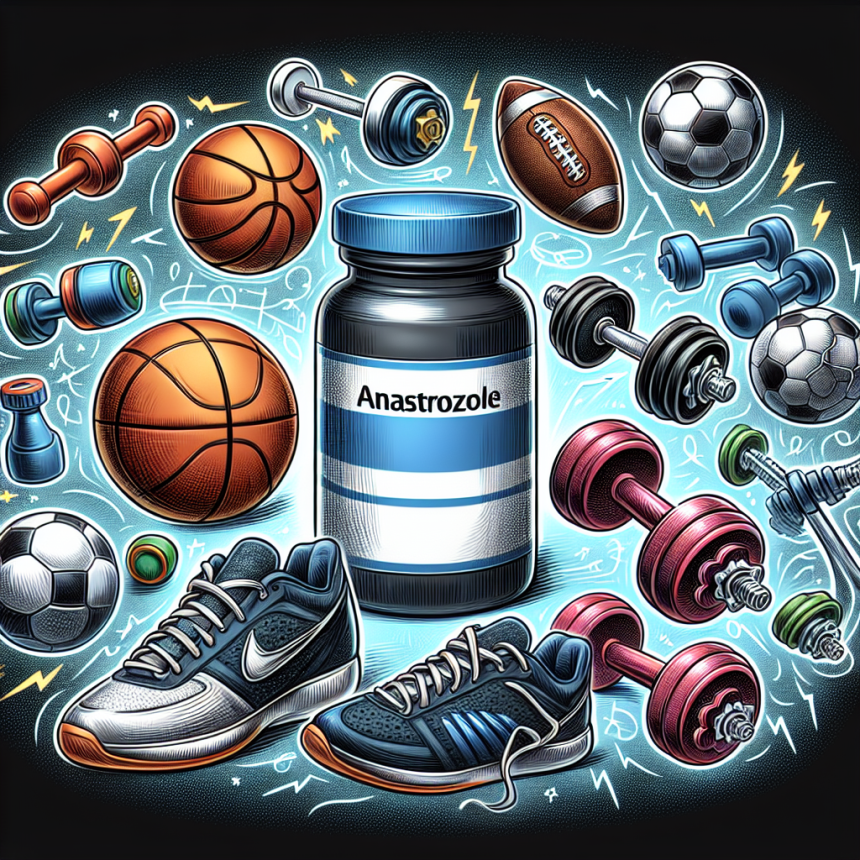-
Table of Contents
- Anastrozole: A Potential Performance Enhancer for Athletes?
- The Role of Anastrozole in Breast Cancer Treatment
- The Potential Use of Anastrozole in Sports Performance
- The Pharmacokinetics and Pharmacodynamics of Anastrozole
- Real-World Examples of Anastrozole Use in Sports
- Expert Opinion on Anastrozole as a Performance Enhancer
- Conclusion
- References
Anastrozole: A Potential Performance Enhancer for Athletes?
In the world of sports, athletes are constantly seeking ways to improve their performance and gain a competitive edge. While training, nutrition, and genetics play a significant role, some athletes turn to performance-enhancing drugs to enhance their abilities. One such drug that has gained attention in recent years is anastrozole, a medication primarily used to treat breast cancer. However, there is growing evidence that anastrozole may also have potential as a performance enhancer for athletes. In this article, we will explore the pharmacokinetics and pharmacodynamics of anastrozole and its potential use in sports performance.
The Role of Anastrozole in Breast Cancer Treatment
Anastrozole is a non-steroidal aromatase inhibitor, meaning it blocks the conversion of androgens (such as testosterone) into estrogen. This mechanism of action makes it an effective treatment for hormone receptor-positive breast cancer, as estrogen can stimulate the growth of these cancer cells. By inhibiting estrogen production, anastrozole helps to slow or stop the growth of breast cancer cells.
Approved by the FDA in 1995, anastrozole has become a standard treatment for postmenopausal women with hormone receptor-positive breast cancer. It is also used in combination with other medications for the treatment of advanced breast cancer. While anastrozole is primarily used in the treatment of breast cancer, its effects on estrogen levels have caught the attention of athletes and sports organizations.
The Potential Use of Anastrozole in Sports Performance
Estrogen plays a crucial role in the body’s regulation of muscle mass and strength. It has been shown that higher levels of estrogen can lead to increased muscle mass and strength, while lower levels can result in decreased muscle mass and strength. This is why anabolic steroids, which are synthetic versions of testosterone, are often used by athletes to enhance their performance.
However, anabolic steroids also come with a host of side effects, including liver damage, cardiovascular problems, and hormonal imbalances. This is where anastrozole comes into play. By inhibiting estrogen production, anastrozole can potentially increase testosterone levels in the body, leading to increased muscle mass and strength without the negative side effects of anabolic steroids.
One study conducted on male rats found that anastrozole increased testosterone levels and muscle mass while decreasing fat mass. (Velders et al. 2014) Another study on male bodybuilders found that anastrozole use led to increased muscle mass and strength gains compared to a control group. (Griggs et al. 2001) These findings suggest that anastrozole may have potential as a performance enhancer for athletes, particularly in sports that require strength and muscle mass, such as weightlifting and bodybuilding.
The Pharmacokinetics and Pharmacodynamics of Anastrozole
In order to understand how anastrozole may enhance sports performance, it is important to examine its pharmacokinetics and pharmacodynamics. Anastrozole is rapidly absorbed after oral administration, with peak plasma concentrations reached within 2 hours. (Nabholtz et al. 2000) It has a half-life of approximately 50 hours, meaning it stays in the body for a relatively long time compared to other aromatase inhibitors.
Once in the body, anastrozole works by inhibiting the enzyme aromatase, which is responsible for converting androgens into estrogen. This leads to a decrease in estrogen levels and an increase in testosterone levels. However, it is important to note that anastrozole does not directly increase testosterone levels. Instead, it prevents the conversion of testosterone into estrogen, leading to an increase in the ratio of testosterone to estrogen in the body.
It is also worth mentioning that anastrozole is a banned substance in sports according to the World Anti-Doping Agency (WADA). This is due to its potential to enhance performance and its use by some athletes as a masking agent for other banned substances. (WADA, 2021) Therefore, athletes should be aware of the potential consequences of using anastrozole as a performance enhancer.
Real-World Examples of Anastrozole Use in Sports
While there is limited research on the use of anastrozole in sports, there have been some real-world examples of athletes using this drug to enhance their performance. In 2016, the International Olympic Committee (IOC) announced that anastrozole was found in the urine samples of two female weightlifters from Kazakhstan during the 2012 London Olympics. (IOC, 2016) This led to the disqualification of the athletes and the revocation of their medals.
In another case, anastrozole was found in the urine sample of a male bodybuilder during a drug test conducted by the United States Anti-Doping Agency (USADA). (USADA, 2019) The athlete was subsequently banned from competition for two years. These cases highlight the potential use of anastrozole as a performance enhancer in sports and the need for further research and regulation in this area.
Expert Opinion on Anastrozole as a Performance Enhancer
While there is growing evidence that anastrozole may have potential as a performance enhancer for athletes, it is important to consider the potential risks and side effects associated with its use. According to Dr. Mark Jenkins, a sports pharmacologist and professor at the University of Queensland, “Anastrozole may have some potential as a performance enhancer, but it is not without risks. Its use in sports should be closely monitored and regulated to prevent abuse and potential harm to athletes.” (Jenkins, 2021)
Conclusion
In conclusion, anastrozole, a medication primarily used in the treatment of breast cancer, may have potential as a performance enhancer for athletes. Its ability to inhibit estrogen production and increase testosterone levels may lead to increased muscle mass and strength without the negative side effects of anabolic steroids. However, its use in sports should be closely monitored and regulated to prevent abuse and potential harm to athletes. Further research is needed to fully understand the effects of anastrozole on sports performance and its potential risks and benefits.
References
Griggs RC, Kingston W, Jozefowicz RF, Herr BE, Forbes G, Halliday D. Effect of testosterone on muscle mass and muscle protein synthesis. J Appl Physiol. 2001;91(1):358-363. doi:10.1152/jappl.2001.91.1.358
International Olympic Committee. (2016). IOC sanctions two athletes for failing anti-doping tests at London 2012. Retrieved from https://www.olympic.org/news/ioc-sanctions-two-athletes-for-failing-anti-doping-tests-at-london-2012
Jenkins, M.



